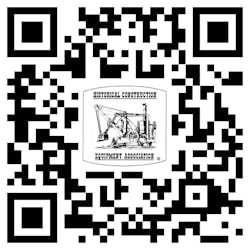Starting with the invention of William S. Otis in 1835, the first successful excavating machines were partial-swing steam shovels mounted on flanged wheels for use on railroad track. The boiler and mechanical works were on a fixed platform, and the dipper swung roughly 90 degrees left or right. Large rail-mounted shovels continued to be used into the early 1930s, until they were rendered obsolete by advances in mounting and full-revolving technologies.
One aspect of that obsolescence was that the machine was confined to the rails, which were usually temporary tracks laid to access the work and shifted as needed, with all the attendant costs. Crawlers and steel wheels enabled free travel, with the only limitations being ground conditions, slope, and clearances. Yet no full-revolving machine large enough for the heaviest digging and loading applications existed until Bucyrus-Erie introduced its 120-B 4-yard electric shovel in 1925; the 120-B dispensed with costs and limitations not only of rail-mounted operation and partial swing, but also of steam operation.
Read also: LeTourneau and the advent of the wheel dozer
But not all owners of the big rail-mounted shovels bought into this new technology. For all its advances, it still required varying investments in generating or purchasing electricity and transferring it to the shovel. Some owners had their railroad shovels converted to mobile use through various combinations of crawlers and/or steel wheels. It’s not known whether the owners instigated this idea, or if the manufacturers did to protect market share.
The Historical Construction Equipment Association (HCEA) is a 501(c )3 nonprofit organization dedicated to preserving the history of the construction, dredging and surface mining equipment industries.
With over 3,500 members in a dozen countries, our activities include operation of National Construction Equipment Museum and archives in Bowling Green, Ohio; publication of a quarterly magazine, Equipment Echoes, from which this text is adapted, and hosting an annual working exhibition of restored construction equipment.
Individual annual memberships are $45 within the U.S. and Canada, and $65 elsewhere. Our next International Convention and Old Equipment Exposition will be August 7-10, 2024, in Canandaigua, New York. We seek to develop relationships in the equipment manufacturing industry, and we offer a college scholarship for engineering students.
Information is available at www.hcea.net, or by calling 419.352.5616 or emailing [email protected].
About the Author
Tom Berry
Tom Berry is archivist for the Historical Construction Equipment Association (HCEA). Information is available at www.hcea. net, or by calling 419.352.5616 or e-mailing [email protected].
